February 2019 is now the snowiest month on record with over 25 feet of cumulative snowfall, and the snow keeps coming! These momentous storms and record-breaking snowfall amounts lead to fun powder skiing, great coverage, and a long spring season, but they also bring increased safety hazards and huge challenges to our Mountain Operations teams. Avalanche hazard mitigation is a substantial and sophisticated undertaking at Palisades Tahoe, with one of the most extensive avalanche mitigation regimens of any ski resort, anywhere.

“There are hundreds of avalanche paths at Palisades Tahoe. Squaw Valley likely has more avalanche-prone terrain than any other ski area in the country. Our Ski Patrols also have the most extensive Gazex installations, and uses more explosives, than any other ski area in the country.” – Will Paden, Squaw Valley Ski Patroller Director
On any given snow safety day, teams of two to four patrollers each set out to work on up to 49 separate avalanche mitigation “routes.” Although Patrollers start their work day as early as 5am, they must wait until the sun rises and it’s light out before they embark on these routes. Each route can take from 30 minutes to up to 2 hours of work, depending on a number of variables including terrain, weather, and the nature of the equipment being used. Many routes require a prior route to be completed before the next can be started, and the entire avalanche hazard mitigation program can take as much as a full day or more to complete, depending on conditions like high winds, wind-loading, low visibility, temperature variation throughout the storm, pre-storm snow surface condition, continued heavy snowfall, and many other factors.
How many control routes does Ski Patrol have to mitigate to open the entire mountain?
Squaw Valley: Squaw Valley is divided geographically and topographically into five avalanche “complexes.” There are 28 avalanche mitigation routes spread out among these five complexes at Squaw Valley. On a typical post-storm day, in addition to firing multiple Gazex cannons, Ski Patrol teams will deploy over 500 hand charges.
Alpine Meadows: There are 21 avalanche mitigation routes at Alpine, including the Alpine Meadows Road. On a typical post-storm day, in addition to firing artillery, avalaunchers, and Gazex, Ski Patrol teams will deploy as many as 470 hand charges.
How often does Ski Patrol use remote Gazexes vs. hand charges during avalanche hazard mitigation work?
Both are used. Gazex cannons are fired before patrol teams start their first routes of the day, and may also be fired again at the end of the day to help maintain access routes for swing and graveyard shift grooming crews, who typically work throughout the night. There are Gazex cannons at both Squaw Valley and Alpine Meadows. Both Ski Patrols also utilize Avalaunchers, which work in a similar fashion to mortar rounds, but are specially designed for avalanche hazard mitigation.
At Alpine Meadows, Ski Patrol also uses a 105mm Howitzer (on average 12 times per season) to help control avalanches on the mountain. Howitzers are time-tested and proven to be excellent tools for avalanche hazard mitigation. The Howitzer is on loan from the US Army to the US Forest Service under a special arrangement that allows the Forest Service to use military artillery for avalanche hazard mitigation. The Forest Service actively monitors Alpine’s use of the artillery under Alpine’s special use permit, and Forest Service personnel join Ski Patrol on artillery missions. Squaw Valley does not operate under a special use permit because it sits on privately owned land, and therefore Squaw is not eligible to participate in the artillery program. In addition to the use of explosives, Ski Patrol ski-cuts slopes to help further mitigate the risk that skiers won’t kick off avalanches.
What are some scenarios that hinder Ski Patrol’s ability to perform avalanche hazard mitigation work?
Perhaps the most common complication for Ski Patrol occurs when extreme wind and high snowfall intensity combine to cause reduced visibility. Patrollers need to be able to see what they are doing, must be able to see the results of their work, and need to be able to move from place to place quickly. Winds in excess of 100mph are routine, and can be strong enough to knock a patroller over. Patrollers must also remain situationally aware and be capable of quickly moving into position should a fellow team member need assistance.
Are there any chairlifts that can be opened without performing avalanche control after a large storm?
No. Both Squaw Valley and Alpine Meadows have widespread avalanche terrain, and neither resort includes lifts that can operate after significant snowfall without first performing avalanche hazard mitigation. Even the beginner lift at Squaw Valley’s base, First Venture, cannot operate until Patrollers mitigate the hazard in Poulsen’s Gully. Similarly, even Subway and Meadow at Alpine Meadows require avalanche hazard mitigation before they can be operated for the public after a storm.
Does all of this work mean that the ski areas will never have avalanches during operations?
No. Avalanches are an inherent risk of traveling and skiing in snow country. Inherent risks always exist, no matter how much work Ski Patrol does to help mitigate the risk. So, it’s critically important that guests who ski in storm and post-storm conditions have appropriate equipment and know-how. For deep powder days, guests should always ski/ride with a buddy – never alone, and should always be aware of not exceeding their ability levels. Guests who seek out the very deep powder that comes in conditions like the big snows of this year are highly encouraged to obtain avalanche awareness training, where they can learn more about avalanche safety techniques, as well as how to carry and use basic avalanche equipment such as a beacon, shovel and probe.

Thank You Mountain Ops!
Thank you to our Ski Patrol, Avalanche Forecasters, and Mountain Operations teams for all of your hard work and expertise as you work to keep us safe!









